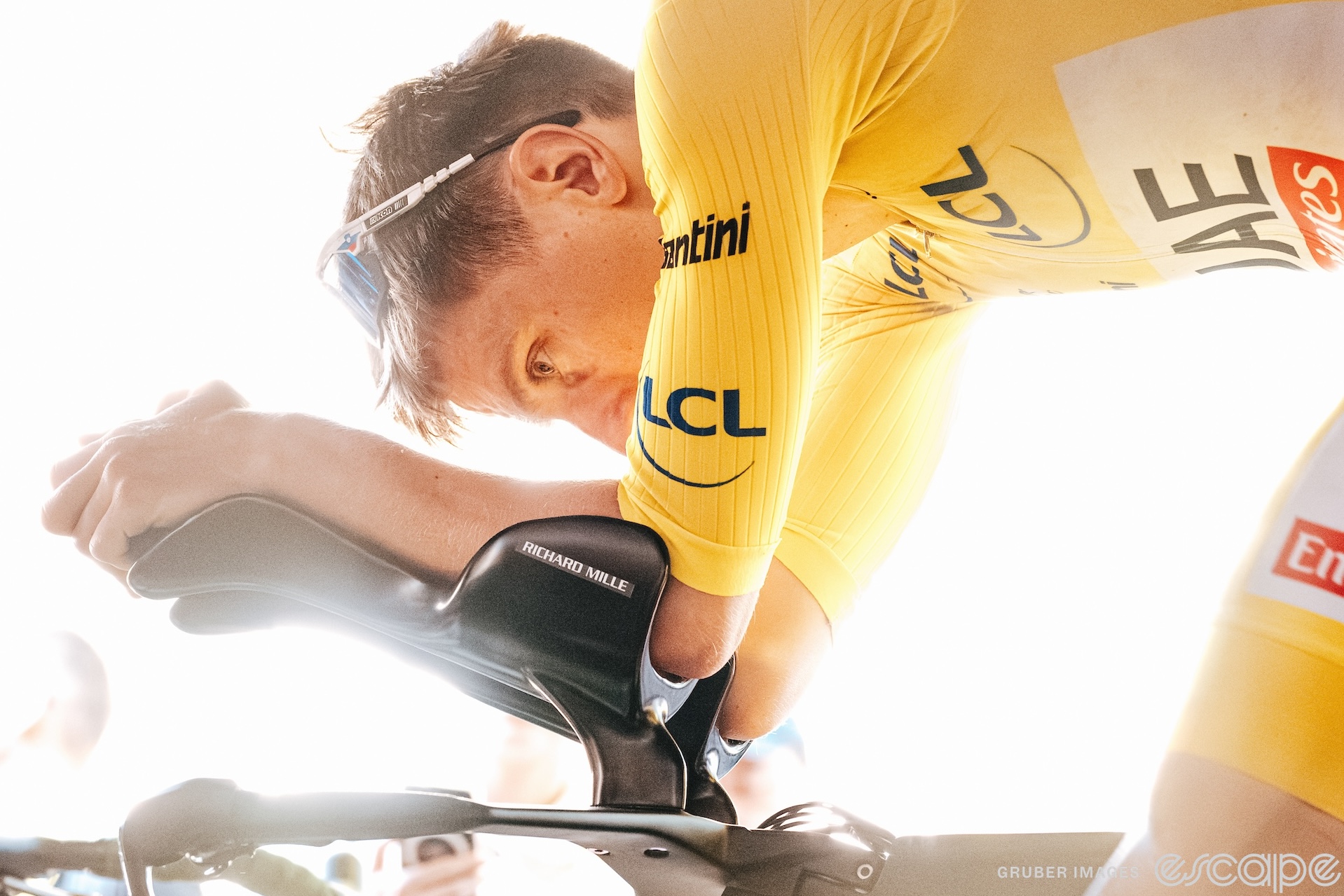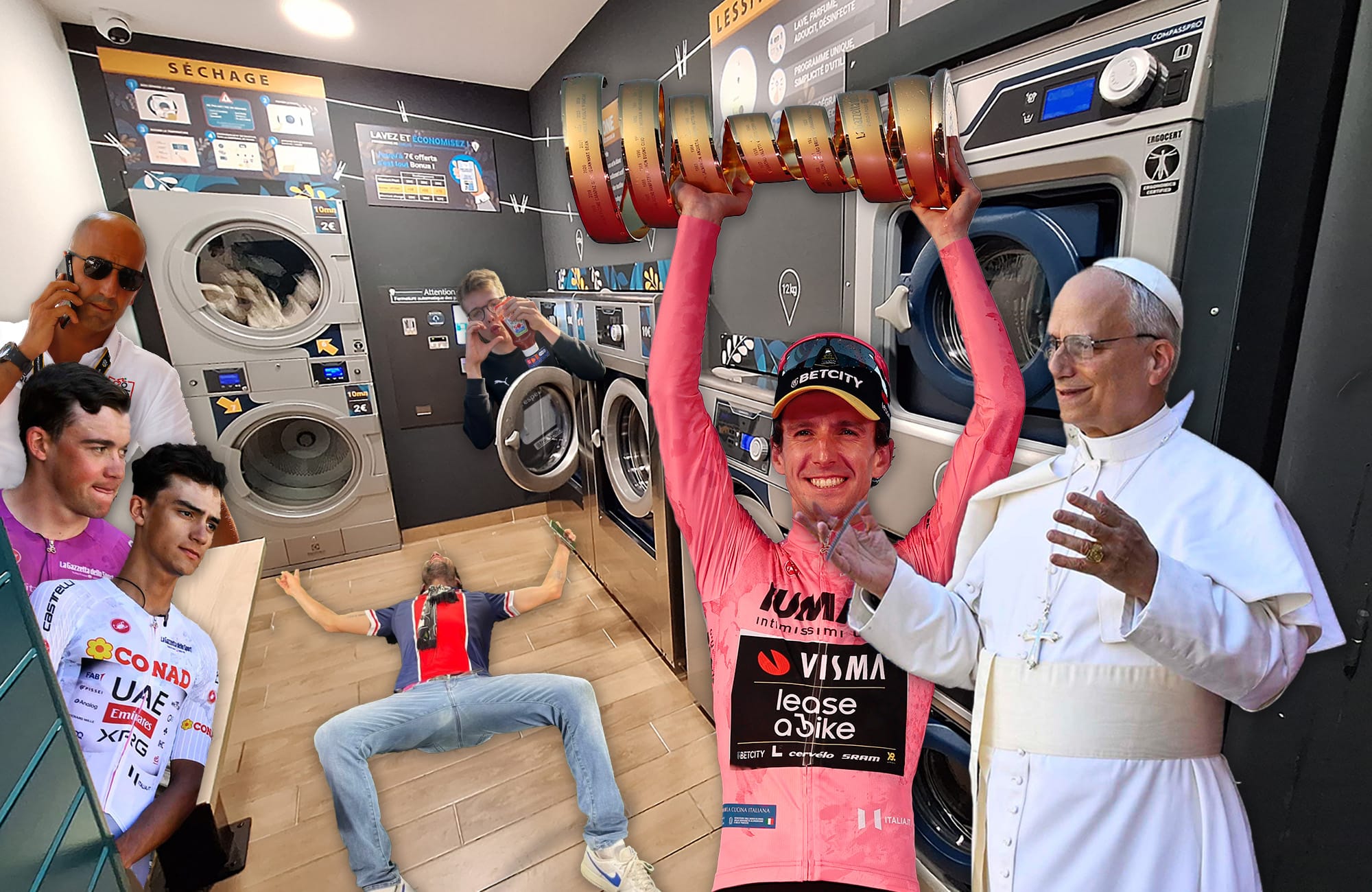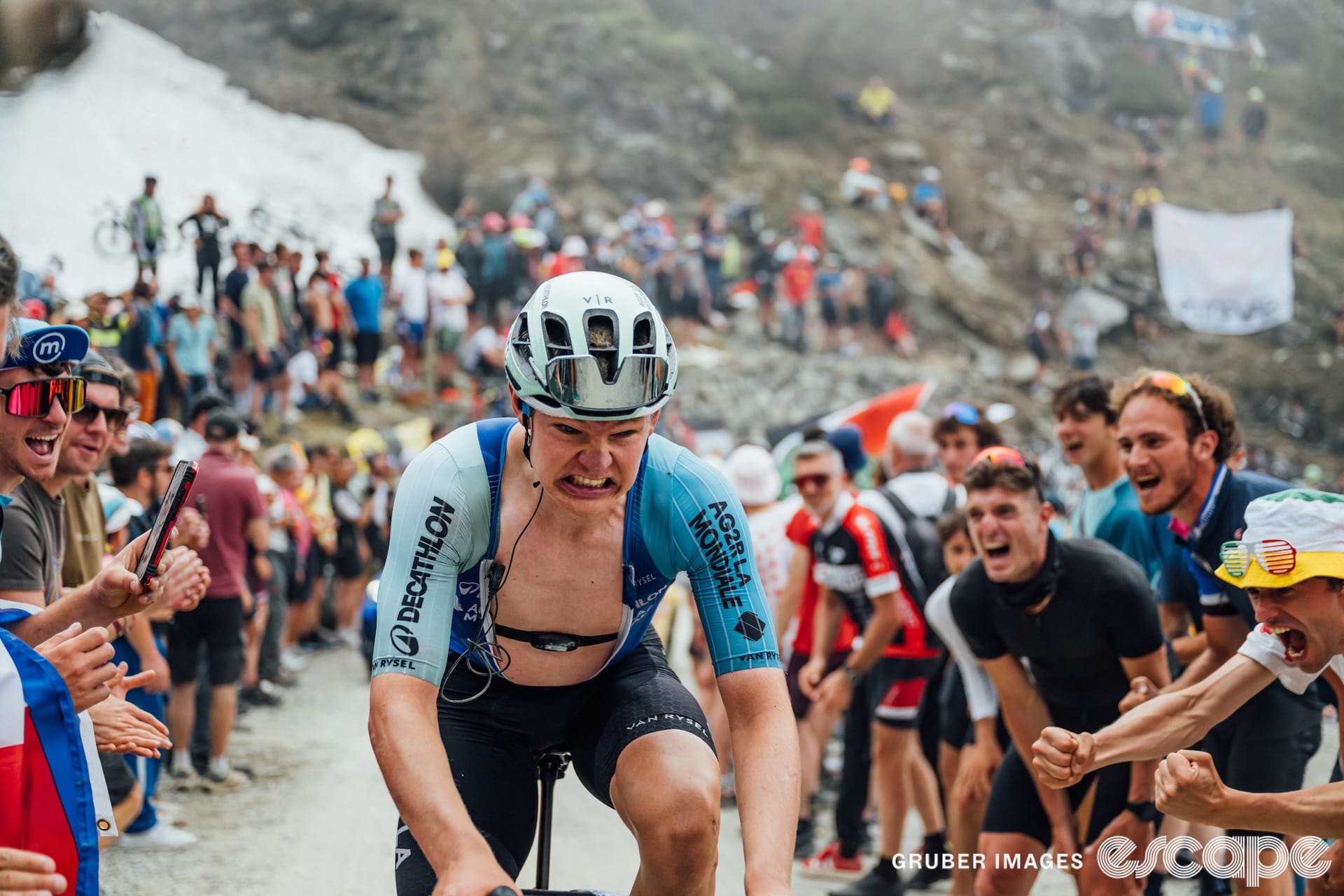Throughout the first week of the 2024 Tour de France, while waiting for the peloton to arrive at the finish, various team staff have as usual been setting up static bikes ready for their riders' warm-downs.
One change to this routine that has seemed to really explode in popularity this year, however, is the prevalence of TT set-ups for the warm-downs. Of course, even as far back as the Bradley Wiggins and Chris Froome eras, both stars would warm down on their TT set-ups, but usually only for the few days before an ITT stage, and the smaller teams were definitely not bothering.
Outside the Visma-Lease a Bike bus (pictured below at the end of stage 5 but present pretty much every day) are the bikes for Jonas Vingegaard, Matteo Jorgenson and Wout van Aert. All three riders want to perform well in Friday's stage 7 time trial, either for potential stage win or general classification ambitions.
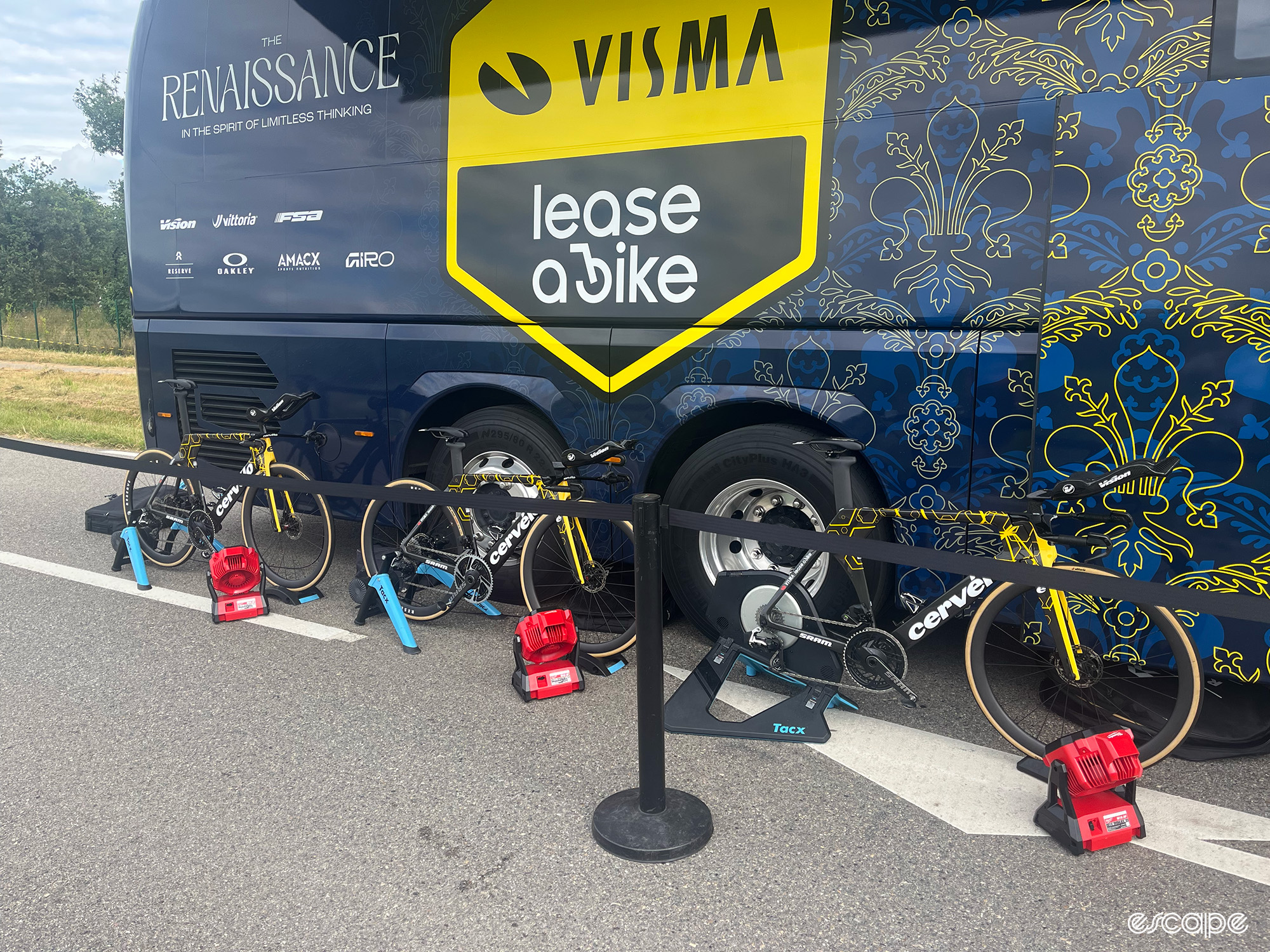
At UAE Team Emirates, Tadej Pogačar's "maximal hacks" TT machine is outside and ready to go as soon as the yellow jersey returns. The same set-up is present at Remco Evenepoel's Soudal-Quick Step bus, and one of the team's coaches, Koen Pelgrim, gave us some more insight into the practice taking over the post-stage routines of the Tour's teams.
"It's to keep the body and the muscles used to that very specific position," Pelgrim tells Escape Collective. "The more you maintain that the better it will be for the TT and obviously during a normal stage you don't have any time to ride your TT bike after the stage; this is the only opportunity they have to do that. So you keep those muscles you use when riding in that specific position."
Can you measure the impact then? Will that be why other teams are now all cottoning on too?
"You can't measure the difference but it makes sense to do it," Pelgrim replied, adding that the team isn't trying to A/B test the effect. "We don't do ones who are with and ones who are without riding a TT bike on the warm-down, so there's no way to know what exactly the difference is, it just makes sense."
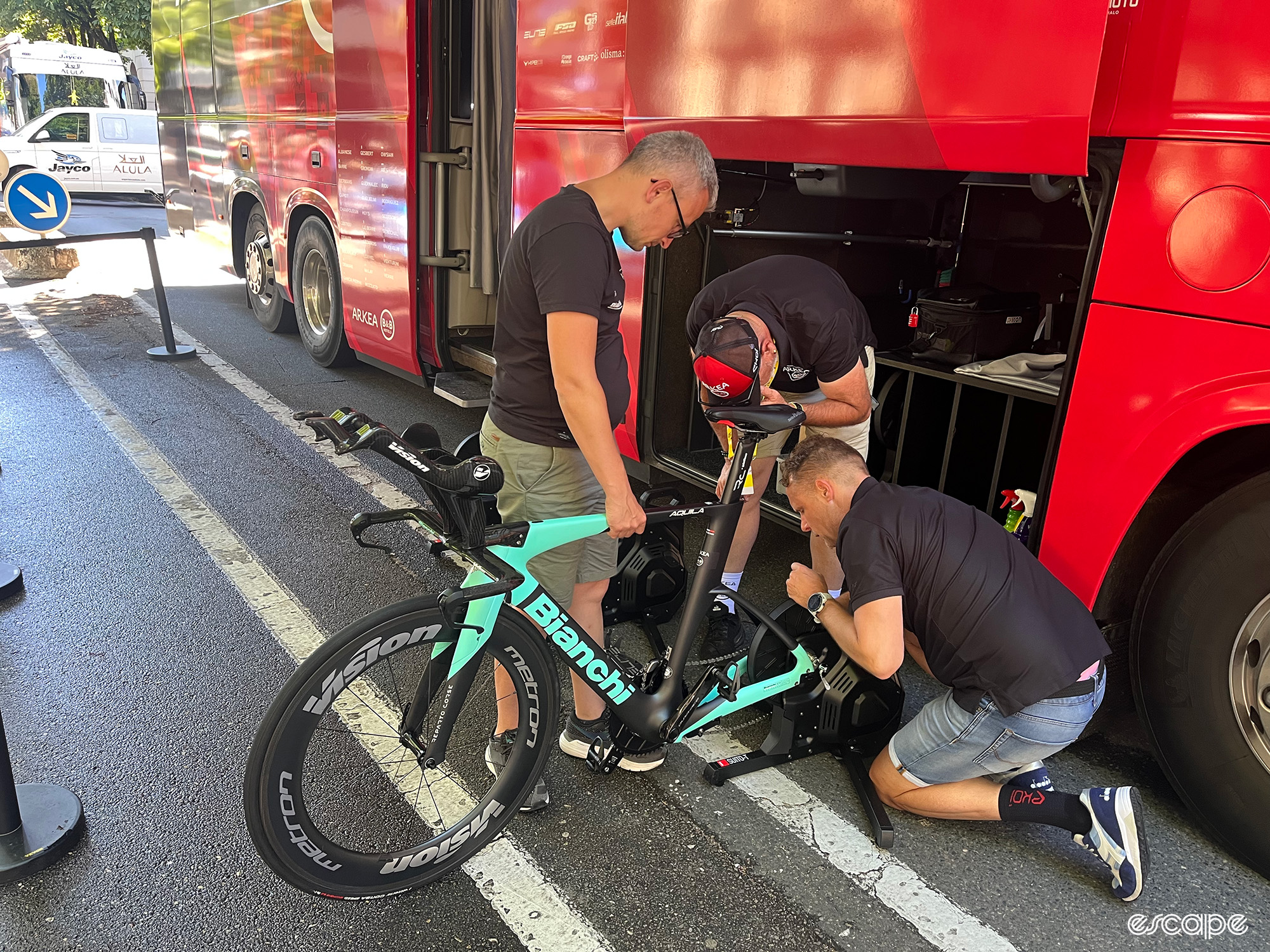
Regardless of the TT set-up, the warm-down itself is similar to what the riders would be completing if they were just on their road bikes.
"It's still meant for recovery from the stage," Pelgrim explained. "What they're doing afterwards, so it's still easy. So we don't specifically increase the load because it's on a time trial bike; it's still meant to be a recovery ride."
For UAE Team Emirates and Tadej Pogačar, last year's yellow jersey bid fell apart first on the time trial, so extra and different preparation has been made ahead of this year's TT double-header.
The team's sports manager, Matxin Joxean Fernandez, explains that the activation of these TT muscles is also because of the different type of effort required in the time trial as opposed to that of an attack on the Col du Galibier.
"I think this time trial will be 29 and a half minutes, more or less, for the winner," Matxin began. "That's completely different to, for example, [the effort on] the Galibier, which is after four hours and is also about being explosive. It's really different, from the training to the nutrition, mechanical section, aerodynamic section.
"It's really different, the concept of this time trial. A lot of information is mixed in for just one moment. Super important is the aerodynamics and training it with the power data, it all mixes together. The socks fitting perfectly, it's a lot of things coming together for 29 minutes."

Speaking to the media after stage 6, Jonas Vingegaard admitted he hadn't reconned the stage 7 time trial but understood that it's "slightly hilly … not so technical." The defending Tour de France champion sees Remco Evenepoel as the favourite, and Evenepoel's Soudal team is focused on putting him into position to succeed.
"Of course an important part of the Tour," Soudal's Pelgrim said of his team's approach to the time trials in this year's race. "Not only for GC but also for the stage it's important for us and it's a goal. So we've put a lot of effort in this TT and also the last one in Nice, in terms of recons, preparations, optimising the set-up, materials."
For Matxin, analysis has shown choices to be made in the two time trials, which provide different problems to be solved by the team in order to set Pogačar up as best as possible to try and defend his yellow jersey.
"It's really different. For example, this time trial is different to the last time trial," Matxin said of stage 7 compared to stage 20, with the former less hilly and the latter with a significant amount of climbing.
For the final TT, he said, the question is one of the proper balance: "most important is the power in the first moment of the TT, this climb and after it's about super aerodynamics for the downhill. This is important for the perfect mix, the light bicycle or the aerodynamic bicycle?" Matxin pondered.
"It's complicated. The aero bike has the problem of the weight but [that] is really important for the last time trial. After the technical bit you'll need to be super aero for the downhill, to gain the time with aero, a low CdA with the power. It's a real mix, and that is different to tomorrow."
After a week of warming down in the TT position, the riders will see whether it pays off on Friday.
Did we do a good job with this story?

